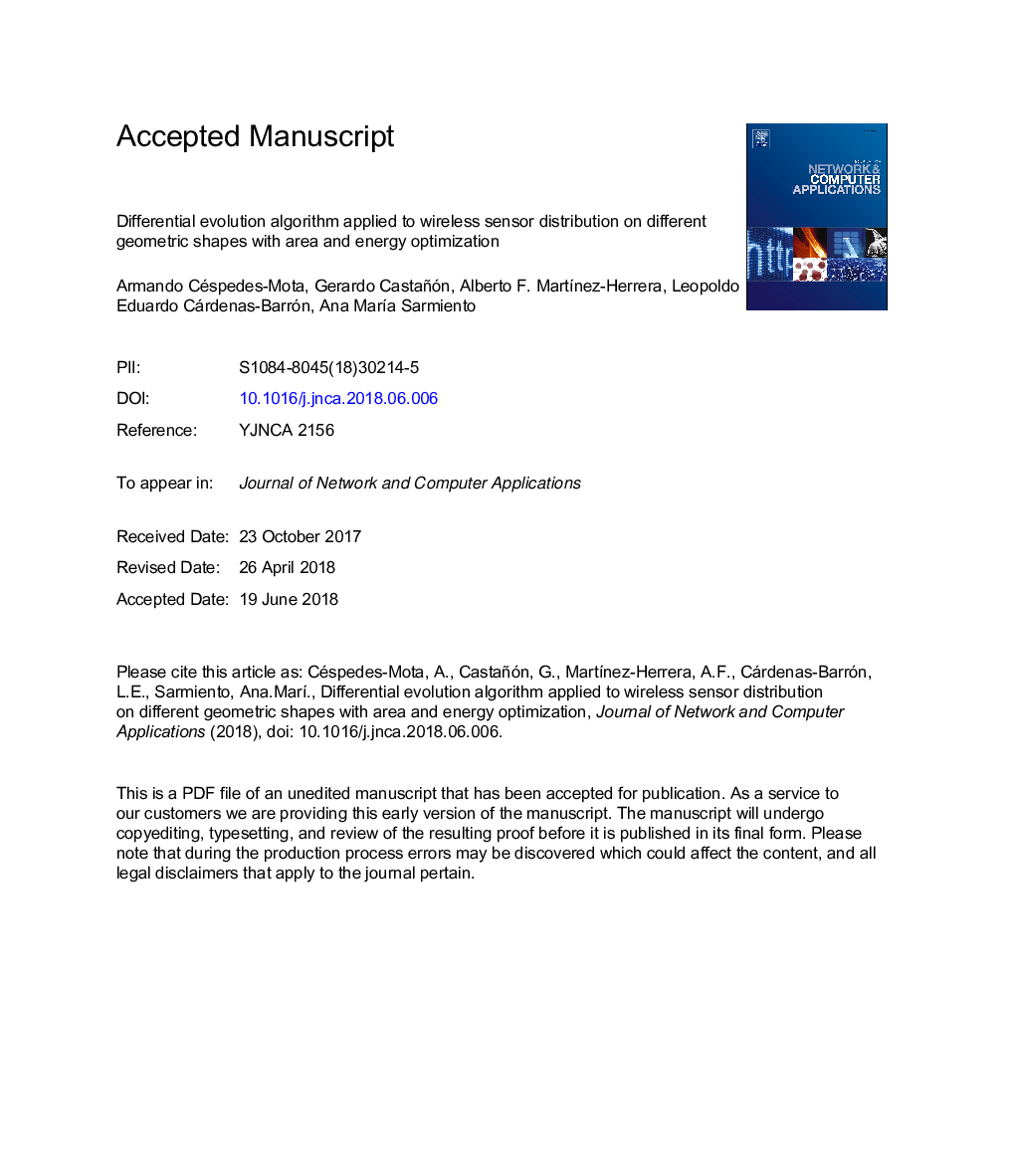| Article ID | Journal | Published Year | Pages | File Type |
|---|---|---|---|---|
| 6884652 | Journal of Network and Computer Applications | 2018 | 16 Pages |
Abstract
Sensor distribution is a significant issue in wireless sensor networks and has been frequently sub-optimally solved by several heuristic algorithms. This research applies multi-objective differential evolution algorithm to jointly optimize the sensors distribution over diverse area shapes, increase the coverage area and reduce the network energy at the same time. A case base and different scenarios with constraints are considered. The restrictions are based on the boundaries of the delimited areas to prevent their centers to be close to the given boundaries, and on the area of interest by reducing the overlap among the covered areas of the nodes. At the end, the shortest distance between the initial node positions and the final node positions is determined finding which node should go in which position using the Hungarian algorithm. Finally, a minimum spanning tree among the nodes is also obtained. The results for different sensor network sizes from 9 up to 56 sensors and different sizes of target areas are presented (fitness, coverage area, energy and needed generations). The computed results show that the right combination of the control parameters leads to an optimized energy and a total coverage area of at least 87% of the target area.
Related Topics
Physical Sciences and Engineering
Computer Science
Computer Networks and Communications
Authors
Armando Céspedes-Mota, Gerardo Castañón, Alberto F. MartÃnez-Herrera, Leopoldo Eduardo Cárdenas-Barrón, Ana MarÃa Sarmiento,
